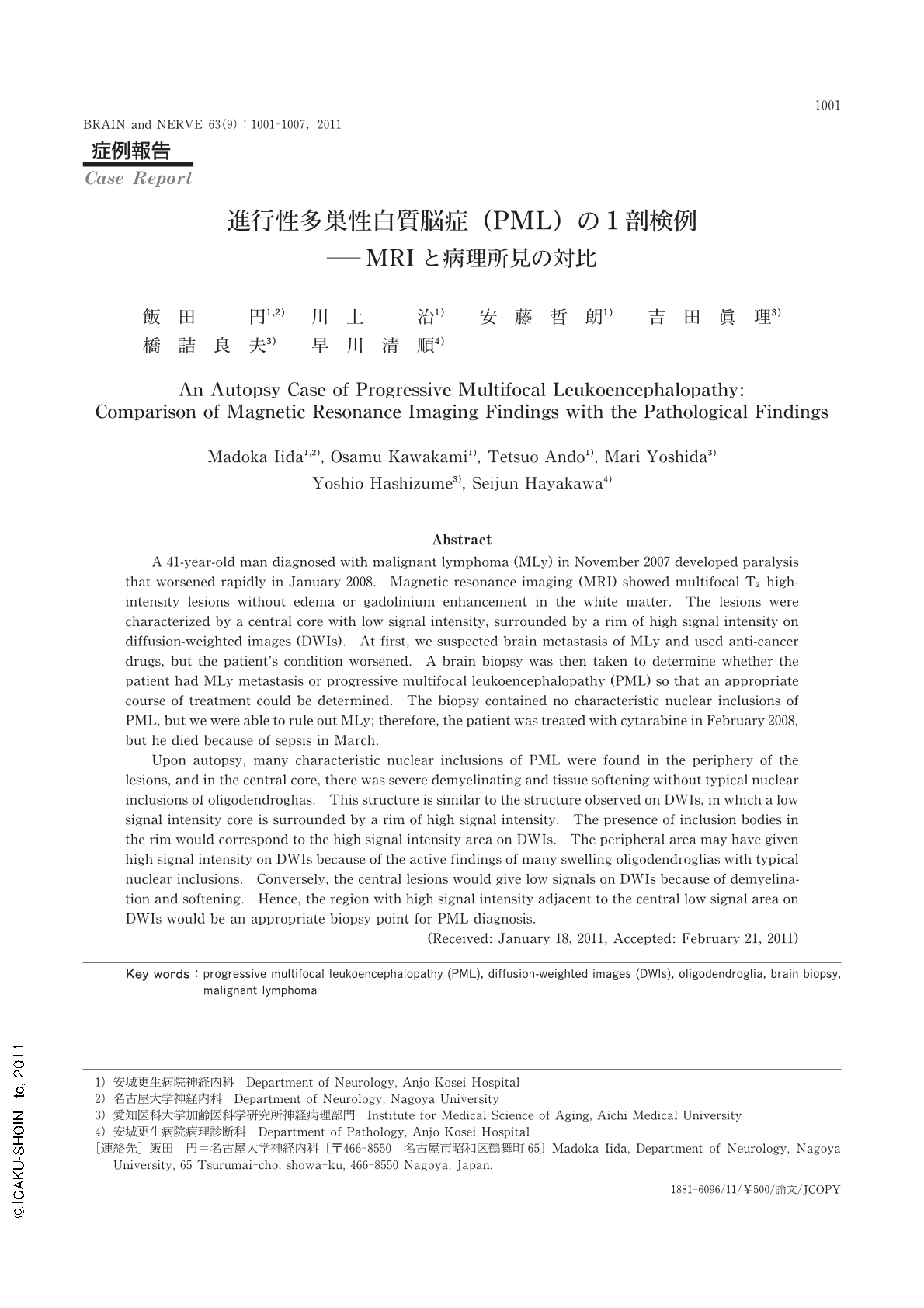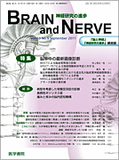Japanese
English
- 有料閲覧
- Abstract 文献概要
- 1ページ目 Look Inside
- 参考文献 Reference
はじめに
悪性リンパ腫(malignant lymphoma:MLy)治療中の患者やAIDS(acquired immunodeficiency syndrome)患者に脳内病変が生じた場合には,脳内MLy,トキソプラズマ感染などと,進行性多巣性白質脳症(progressive multifocal leukoencephalopathy:PML)を鑑別するために脳生検が必要になることがある1-4)。ただし,脳生検では少量の組織しか採取できないので,最も診断的価値が大きい部位を選択して生検する必要がある。しかしながら,PMLにおいて脳生検の適切な部位を検討した報告は少ない。本症例報告ではMRI所見の経過を追い,生検結果を踏まえてPMLのMRI所見と病理所見を対比して,確定診断に適切な生検部位を検討した。
Abstract
A 41-year-old man diagnosed with malignant lymphoma (MLy) in November 2007 developed paralysis that worsened rapidly in January 2008. Magnetic resonance imaging (MRI) showed multifocal T2 high-intensity lesions without edema or gadolinium enhancement in the white matter. The lesions were characterized by a central core with low signal intensity, surrounded by a rim of high signal intensity on diffusion-weighted images (DWIs). At first, we suspected brain metastasis of MLy and used anti-cancer drugs, but the patient's condition worsened. A brain biopsy was then taken to determine whether the patient had MLy metastasis or progressive multifocal leukoencephalopathy (PML) so that an appropriate course of treatment could be determined. The biopsy contained no characteristic nuclear inclusions of PML, but we were able to rule out MLy; therefore, the patient was treated with cytarabine in February 2008, but he died because of sepsis in March.
Upon autopsy, many characteristic nuclear inclusions of PML were found in the periphery of the lesions, and in the central core, there was severe demyelinating and tissue softening without typical nuclear inclusions of oligodendroglias. This structure is similar to the structure observed on DWIs, in which a low signal intensity core is surrounded by a rim of high signal intensity. The presence of inclusion bodies in the rim would correspond to the high signal intensity area on DWIs. The peripheral area may have given high signal intensity on DWIs because of the active findings of many swelling oligodendroglias with typical nuclear inclusions. Conversely, the central lesions would give low signals on DWIs because of demyelination and softening. Hence, the region with high signal intensity adjacent to the central low signal area on DWIs would be an appropriate biopsy point for PML diagnosis.
(Received: January 18,2011,Accepted: February 21,2011)

Copyright © 2011, Igaku-Shoin Ltd. All rights reserved.


